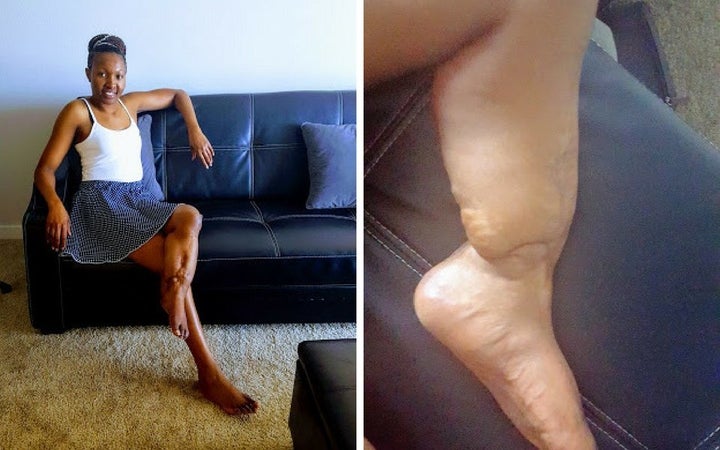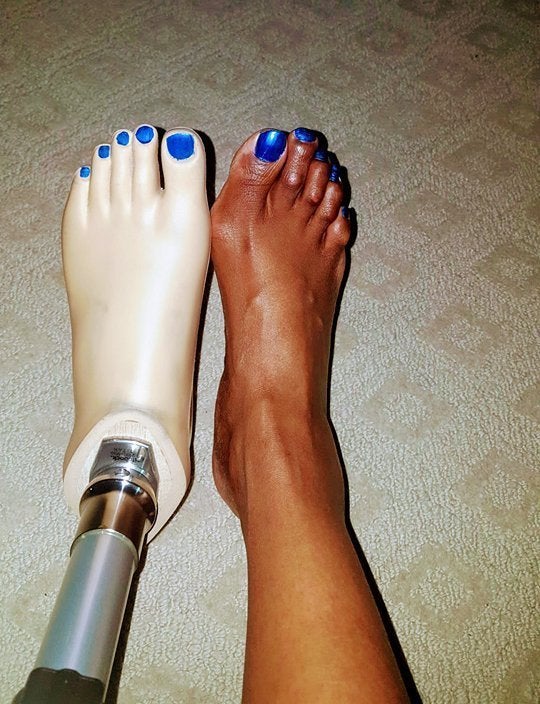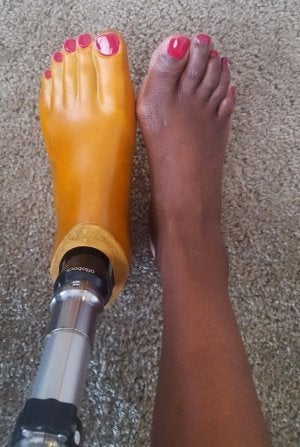A woman in Canada who recently had her left leg amputated is having a difficult time accepting her new body.

Rahab Wanjau, 30, was born with a deformity on her left tibia (or shinbone). She told HuffPost that after five painful surgeries, which left her relying on crutches most of her life, doctors recommended she have her leg amputated.

In June, she had it removed at Regina General Hospital in Regina, Saskatchewan. After her surgery, Wanjau went to Regina’s Wascana Rehabilitation Center to pick up a prosthetic leg and foot shell, or a cosmetic covering for a prosthetic foot.
She was shocked and disheartened to discover she only had two color options for a foot shell: one shade was way too light and another was too dark.

Wanjau said when she asked her prosthetist if she could customize the color, she was told she would have to pay out of pocket for it.
“We have lots of color options when buying house paints, models of cars and makeup foundations,” Wanjau told HuffPost. “It would be great if I can pick a foot shell in my skin tone.”
Wanjau said she opted for the lighter hue with the intention of altering it at home. She attempted to paint and dye the foot, to no avail.

Out of frustration, Wanjau contacted Ottobock, the company that manufactures the foot, and learned that because of the prosthesis’s material, only the company or an outside professional could permanently change the color. This too would have to be paid for out of pocket.
Wanjau said she wears a sleeve on her prosthetic leg, which helps the artificial limb resemble her natural skin tone, but hasn’t been able to find anything similar for her foot shell.

Wanjau said because the color contrast is so striking, friends, family and strangers on the street have asked her about it, which leaves her feeling insecure and is preventing her from “embracing the new me.”
“I would love to feel whole again,” Wanjau told HuffPost. “To feel more confident, to embrace this artificial part that is now part of my body.”
According to a 2007 article published by Physicians Postgraduate Press, cosmetic appearance is key in a user’s acceptance of a prosthesis, and is on par with its physical function. A research report published in 2014 in Prosthetics and Orthotics International also argues that aesthetic quality of the prosthesis can help improve the wearer’s body image and psychological well-being.
“I am raising a daughter and would love her to be confident and have self-love,” Wanjau told HuffPost. “How do I do this when I don’t feel so?”
For the time being, Wanjau said she is having “fun” with her foot shell by painting its nails.
“That’s one thing I loved doing [before the amputation], painting my nails,” Wanjau said. “It helps in making the foot look more real.”
HuffPost has reached out to Ottobock for comment. We will update this article accordingly.

